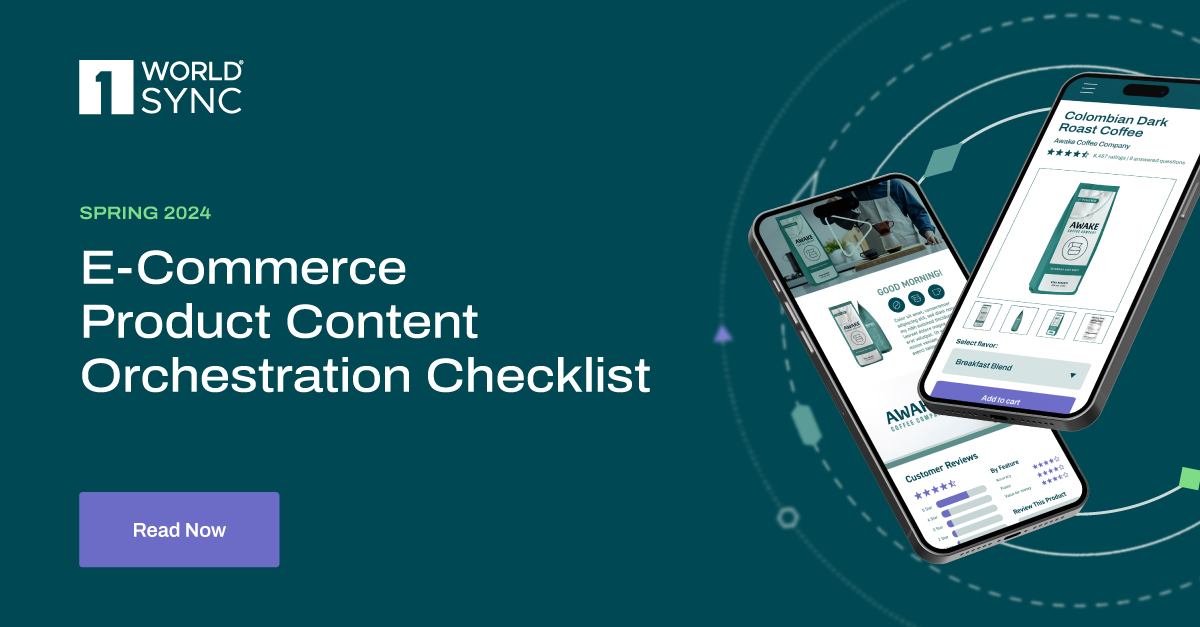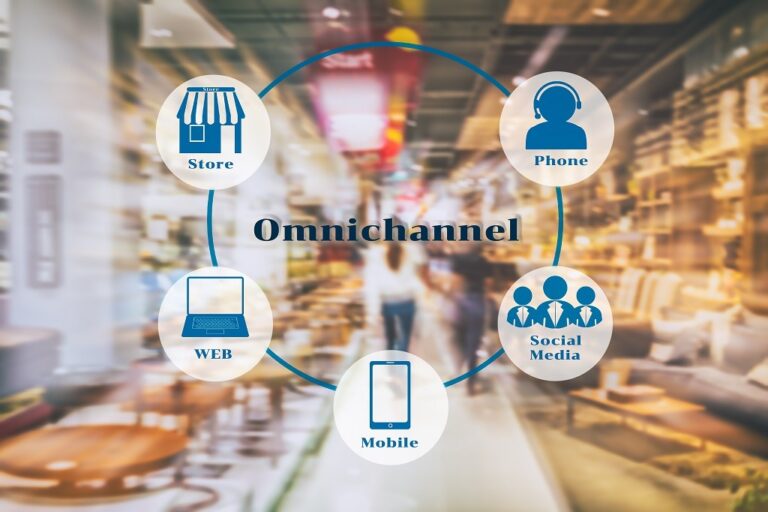Go beyond SEO basics to drive digital experiences; Invest in your brand with innovative, search-engine-optimized product content.
In today’s omnichannel commerce market, product manufacturers use 2-3 different systems on average to provide their retailers and trading partners with key product data and attributes. The reasons are multifold. However, top two contributing factors include the need to ensure their product and brand is properly represented and that consumers have all the necessary information to complete their purchasing decisions.
Unfortunately, the current process no longer works to optimize supply chain efficiency. The status quo causes unfortunate impacts that can result in slower product go-to-market launch availability and consequentially lost revenue or delayed profit margin targets, negative brand impact and potentially lost return customers.
The process must change. And while there is no overnight “magic bullet” as to when retailers, buyers or other trading partners will centralize the process for standardized product data requirement submissions, there are steps product manufacturers can take yesterday. Steps not just to write search engine-optimized omnichannel product descriptions but to move beyond basic SEO marketing copy best practices and take innovative SEO actions that move products into consumers’ hands better, faster and on a recurring return basis.
SEO product descriptions
While having to touch product descriptions every few months to meet changing retailer requirements (at times, daily) may not be ideal for suppliers, the opportunities to improve search results and increase consumer visibility and engagement are worth the effort. While retailers may use different systems, at the end of the day, the consumer’s voice speaks volumes and suppliers can invest in providing product content experiences and information they know their customers expect. Ultimately, facts and authenticity will always win, especially as consumers’ product savviness grows. Believe in the value of your product, stay true to your brand and leverage both long-tail and short-tail product descriptions as your secret sauce to foresee retailer expectations.
Know your current customers tend only to order standard product size (versus other options you make available)? Be one efficient step ahead and ensure both short-tail- and long-tail product descriptions are supplied to your partner. Have a specific wine that is 25% away from meeting the requirements to be labeled as certified organic? Spin that into a positive and educate your loyal customers through updated, above-the-fold content on new product lines coming out soon! Your followers will appreciate the heads up to set necessary reminders for themselves when the time comes (2021 holiday wine shopping season, anyone?)
Omnichannel SEO for equal e-commerce shopping opportunities
As more consumers plan to continue shopping online this holiday season and into 2022, the need to provide equal shopping experiences to all consumers is paramount. A part of that includes ensuring certain areas of e-commerce websites, such as visual content, are cognizant of consumers directly impacted by the Americans with Disabilities Act (ADA). While it may be initially perceived as more of an abstract SEO consideration, it is important to factor in that one in four U.S. adults—61 million Americans—have a disability that affects major life activities—for example online experiences and their ability to engage1. Typically, there are requirements or checklist items product manufacturers need to meet in retailer supplier onboarding processes and programs. Similarly, product manufacturers can request to understand how today’s retailers and e-tailers are maintaining ADA-compliance. In addition, suppliers can also ensure necessary discussions take place regarding alternatives to traditional on-screen elements—including text, images or other multi-media components—by incorporating such content into the product data supplied to or syndicated to a retailer or trading partner for review and approval. Doing so can serve as a tracked placeholder for a conversation to take place. Such alternatives can include (but are not limited to):
- Prerecorded captions properly labeled as such or sign language interpretation for individuals with a hearing impairment that may rely on video relay services (VSRs)
- Providing static content for time-based, or interactive multimedia including videos, animated infographics with an audio/visual component [Note: For a better understanding of alternatives, please visit the Web Content Accessibility Guidelines (WCAG) of W3C’s Web Accessibility Initiative.2]
Image hotspot content
The consensus is in. More consumers in today’s digital world rely on image hotspot content equally, or in some cases more than, traditional webpage text. (Stay tuned for a new industry report dropping mid-November from 1WorldSync capturing consumer perspectives on the impact of product content to their shopping experiences). Incorporating key product features that meet user needs directly into an image JPG, EPS, TIFF, PNG or PSD file—whether its 360-degree-spin animated, static or other—boosts a suppliers chances that their product will have greater or longer consumer engagement.
Take that thought process a step further by embedding product text directly into the 360-degree-spin animation of a product shot as a user is turning a product onscreen, at a specific angle, and those chances add up exponentially. (Embed text strings in the images as .XML-based metadata combined with using image text as ALT tags and you’ve got a winning combination for greater browser search rank). Why? You have just provided your customer everything they need to remember about your product in one snapshot view in seconds. Bonus: you’re actually providing valuable, digital product content that is not only search-engine optimized but that is also applicable to consumers during one of the most critical phases of the buyer’s journey—the consideration stage.
On-page speed optimization and load time opportunities
On-page SEO is a foundational component to any Search Engine Optimization campaign. As a product manufacturer, you may be thinking, ‘Well, I have no control over the HTML design of my retailers or e-tailers webpages, or of how much overall content is loaded on their e-commerce sites, or what CMS system they use to optimize webpage content loading time for consumers,’ right? Perhaps, however, as mentioned before, product manufacturers have control over the conversation they want to have to ensure their product and brand is properly represented in the market. And that begins by understanding how a product will be featured on a retailer’s webpage or PDP and there is an opportunity to reduce page load time—such as with ContentCast™ Inline Content, loaded as a user scrolls down a specific product page. Manufacturers should also better understand from their retailer trading partners how many clicks from an e-commerce homepage a customer must take to get to their product, does it appear in search bar results and most importantly—what the consumer experience if a multimedia component of their product is taking longer than usual to load? Consider the following.

Think about what a product manufacturer (from a consumer’s perspective) would want to experience if and when that happens? Could you provide your retailer with guidance or product content value prop snippets that could display in pop-up format onscreen to capitalize on the situation? Yes. Whatever the outcome, it is up to a supplier to initiate the discussion around ensuring their product and brand is best represented and experienced as they would hope for a consumer.
Leverage all SEO content areas of your Product Detail Page (PDP)
Any omnichannel commerce expert can tell you the value of a PDP. ‘It’s your holy grail to ensure your product stands out, both above-and below-the-fold to customers and prospective buyers. It helps bring your product content to life with featured inline content.’ Luckily, with ContentCast™, product manufacturers have the option (and control) via a self-service portal to add rich content to syndicate to their respective product pages across up to 3,000 global retailer partners. Build it once, and push your GDSN-plus product content out seamlessly and simultaneously to all intended retailer and trading partner e-commerce websites. Is your brand an experienced seller in the Amazon store? Win-win! You can now add Amazon A+ Content to your PDP to meet your conversion goals better.
References.
2. W3C, Web Accessibility Initiative, “WCAG 2.1 at a Glance”
Related Posts




Enhancing Product Content for a Superior Customer Experience in the Consumer Electronics Industry
Read Article
